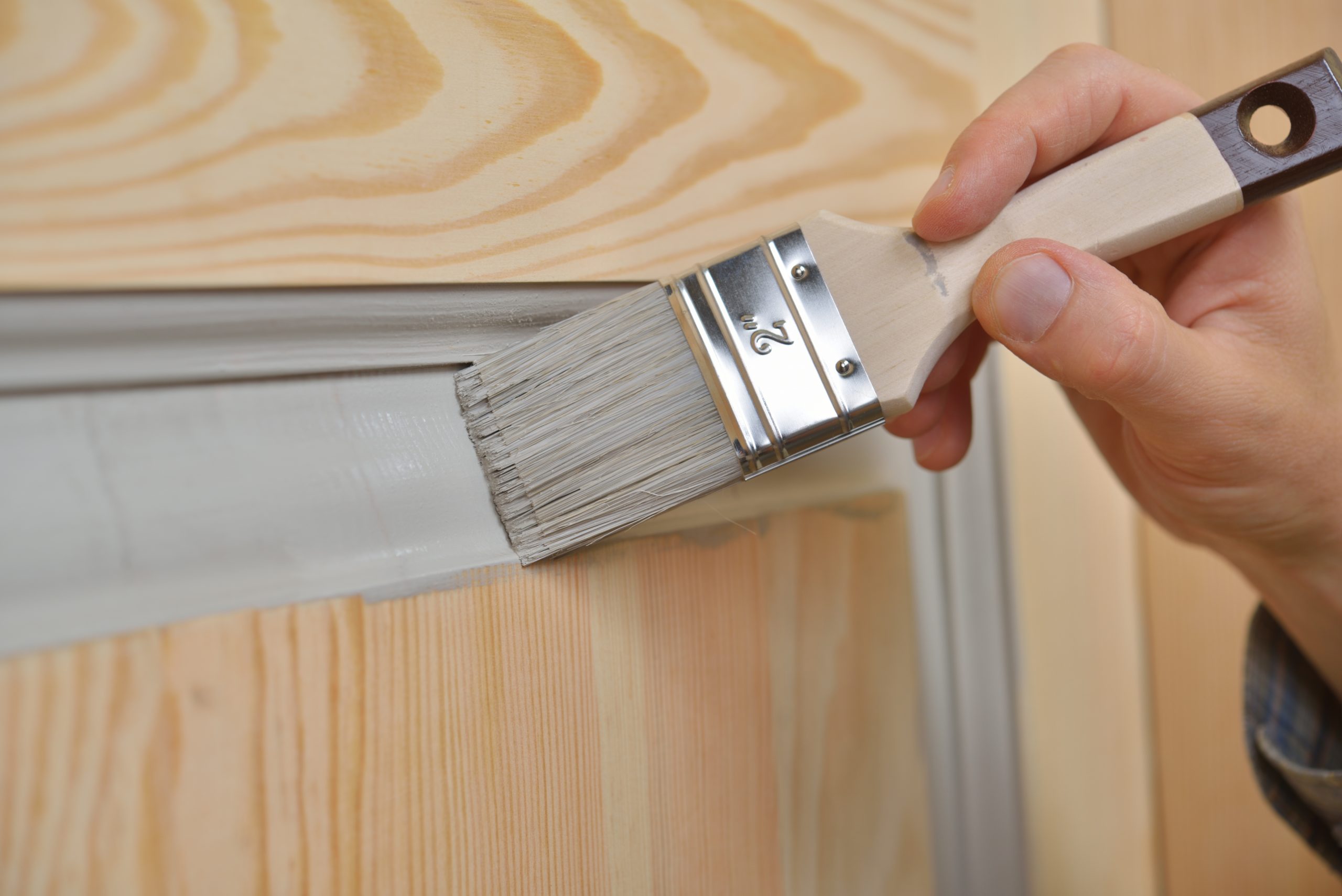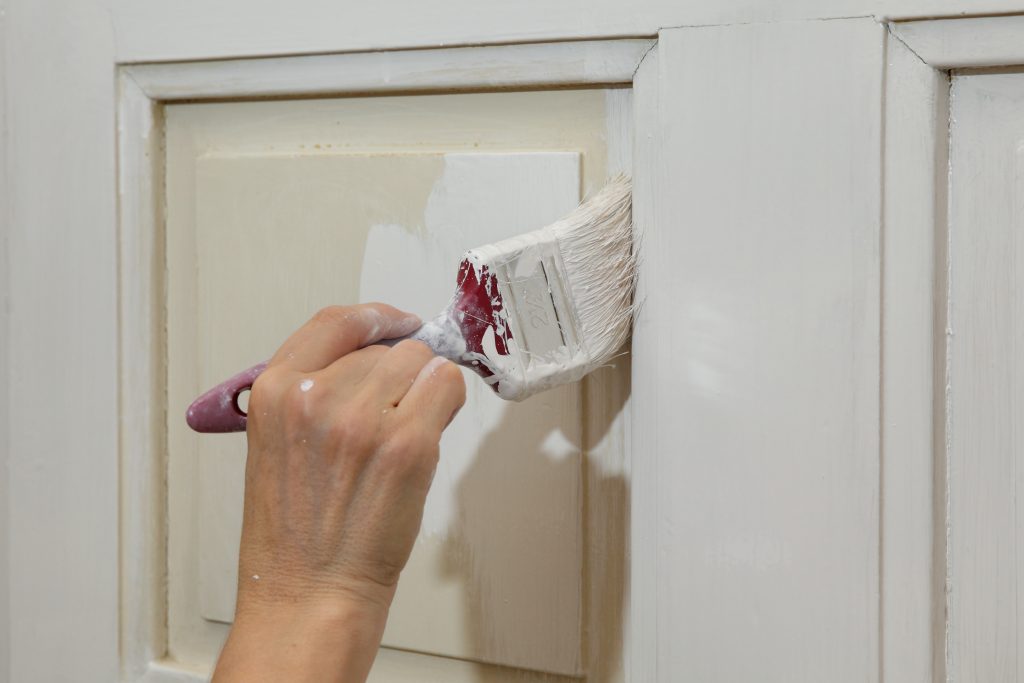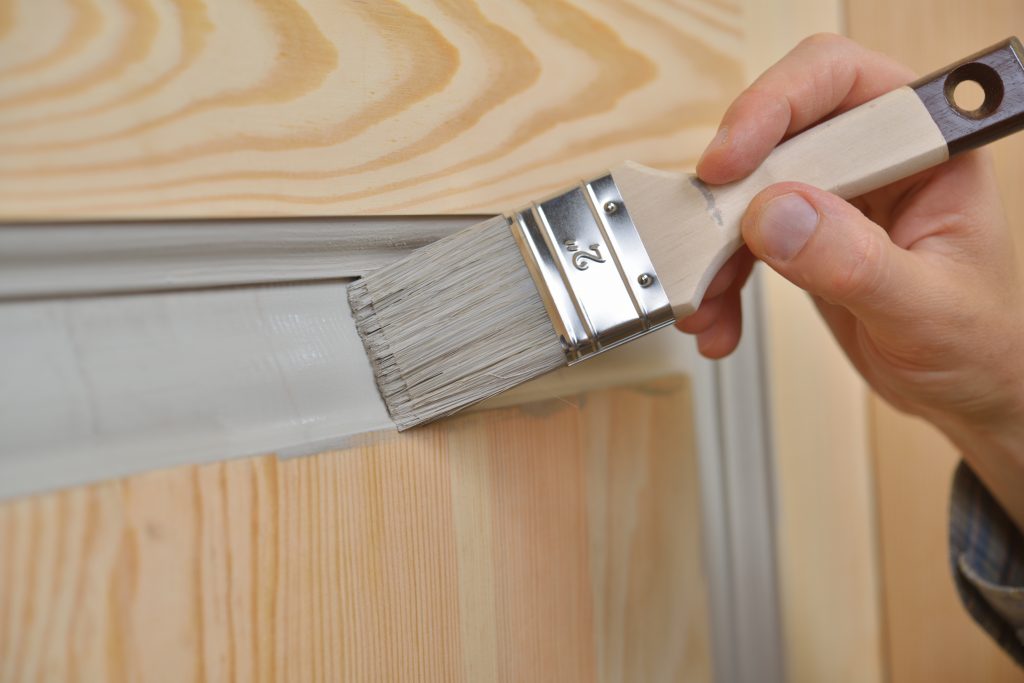
Unless you live in a well, your home probably has a door. Our doors are one of the first thing people notice about our homes. They are the portals to our world and deserve to look their best. In this door painting guide we discuss how to maintain and treat them for high quality, long lasting results.
During the summer we’ve talked a lot about exterior painting (it’s the best time to do it after all) but never mentioned exterior doors. If you have limited time for painting, or don’t want to commit to a large project, giving your door a fresh coat of paint is a great way to improve the look of your home without too much investment.
Should I Paint my Front Door?
Our front doors go through a lot. Every time we unlock them, they get scratched by keys, thumped by bags, or nearly blown off the hinges in bad weather. The same is true for back doors, which are often forgotten even if the front is given a fresh coat.
Painting your front door is a simple and cheap way to improve the kerb appeal of your home. It can be done in a single day with little to no painting experience – and the results speak for themselves!
The Best Paint for Front Doors
Exterior doors need a tough paint that can survive the years of battering. But which paint is best?
The answer depends on what material your door is made of. The most common materials for front doors are:
- Wood
- Steel
- Aluminium
- Fiberglass
- Glass
Of these five, wood is the most common, mostly consisting of hardwoods such as oak, maple, cherry, and walnut. These are easy to paint, but we recommend sanding them down first for a faultless finish.
Steel doors offer unmatched security for your home, and with the right hinges can be as easy to open as any other material. Aluminium is lighter and offers similar protection. Metal surfaces are easy to paint, even for beginners, but run the risk of flaking if you don’t prime the surface or use the right type of paint.
Fiberglass is the best of both worlds and is being used more and more on modern builds. It can be manufactured to look like real wood, even down to the grain. Fiberglass can be painted any colour and is great for energy efficiency. Most have glass panels fitted within the door, giving you less surface area to paint but requires more prep.
Finally, glass doors are perfect for if you live in a hot country or want to let in as much light as possible. In the UK they are used more for businesses than residential properties but can look great on your home too. They can be even easier to paint, as you only need to do the frame.
We have a wide range of paint that is perfect for your doors, both exterior and interior:
All of our paints are high-quality trade paint that is proven to be hardwearing and, of course, looks fantastic. To add even more toughness, we also have an Acrylic Undercoat for that extra layer of protection.

How to Paint Exterior Doors
Once you’ve picked the perfect paint, it’s time for the fun part. As they are the most common, we’ll explain how to paint a wooden door in detail.
Here’s what you’ll need:
- Paint
- Primer
- Sandpaper
- Paint Stripper*
- Masking Tape
- Old Towels/Sheets
STEP 1 – Prep
Choose a nice day to do your painting, with no rain expected and only light wind. You’ll have to leave your door open for a few hours as it dries, don’t let a gust of wind ruin your hard work!
Use your old towels and sheets to cover the floor around your door; this will protect from splashes and runoff.
It’s always a good idea to clean your door before moving on to the next steps. Painting onto dirt, grime, or dust will ruin the finish of your paint.
STEP 2 – Sanding & Stripping
To get the best finish on your door, you need to remove the previous coat(s) of paint and primer. You can skip this step, but your new layers of paint won’t last nearly as long, and you will get an uneven finish.
If the existing paint is faded but not flaking, use 240-grit sandpaper. If it is already flaking, 120-grit will be plenty.
*You should use paint stripper if there are many layers of paint that will take a long time to get through with only sandpaper. If you do, clean the surface thoroughly after the stripper has done its job with water or white spirit and then wipe away with a soft paint brush or cloth.
Take your time with the removal of previous layers, as any parts you miss will show through even multiple new coats of paint, ruining the look of your door.
STEP 3 – Priming
Next, you need to apply an even layer of primer to your door. Like with most painting projects, primer helps the paint to cling to the surface, and creates a smoother finish and bolder colour.
Use your masking tape to prevent runoff ruining any windows etc. before you prime.
A single layer of primer should be plenty, and is only recommended, not essential if you’re on a tight budget.
STEP 4 – Painting
Once the primer has dried use your masking tape to re-protect the areas you don’t want to paint.
Now for the best part. For an exterior door 1-2 layers of high-quality paint should be plenty, but don’t be afraid to add a third for extra protection.
If you have any paint left over, save it for any future touch-ups or for your back door!
STEP 5 – Admire Your Work
Once your final layer has dried and you can close your door again, take a step back and admire your newly painted door. How does it look?
Painting Interior Doors
If you’re redecorating any of your rooms, you should also paint your doors.
Our doors between rooms don’t suffer the same wear as their exterior equivalent, but still get scuffed by door stops, moving furniture, and a lot of traffic throughout the day.
Most interior doors are made of wood, so the wood paints we recommended earlier will be perfect for inside too. A layer of primer and a couple coats of paint later and you’ll have doors that look as good as new! Just remember to wear a dust mask as you’re sanding.

The UK’s Most Trusted Paint Supplier
Whatever paint you choose for your doors, Paintmaster has the perfect product for you. Everything we offer, from paints and primers to brushes and rollers is affordable and high-quality.
If you have any questions about our products or want to learn more about interior and exterior painting, either get in touch or check out our blog for more information.
We look forward to hearing from you.
FAQ's
Can I paint over old paint?
If you are using the same type of paint as has been used previously, you don’t need to remove the old layer. However, if the paint is cracked or peeling, you should remove it before adding more. A layer of primer is also recommended to create a barrier between the new and old paint.
Do I need to sand a door before painting?
If your doors are looking worn out, it’s important to both clean them and sand the surface down. The resulting smoothness will help the paint and primer to bond to the surface, and there will be no imperfections showing through.
Is it better to paint a door with a brush or roller?
You can use a paint brush or paint roller to paint your door; we recommend using a combination of both. Rollers are best for large, flat surfaces, whereas a sturdy paint brush will help you paint edges and get to those hard-to-reach areas.
What colour should I paint my front door?
There are a range of colour options for front doors, the choice is yours! Bold colours are a great way to express yourself, but more muted tones or shades may match your exterior walls more. White is a classic choice, just be sure to clean it regularly!
What happens if you paint without primer?
A layer of primer creates a better surface for your paint to cling to. This adds durability as well as making your colour and sheen stand out more. Primer is especially important if the surface has been painted previously. Without primer, your paint will look faded or patchy.
What kind of paint do you use on doors?
Wooden doors can be painted with a range of wood paints. These are designed to protect the surface from scuffs and scratches but also create bold colours and finishes. It’s recommended to create an undercoat first to maximise the longevity.
